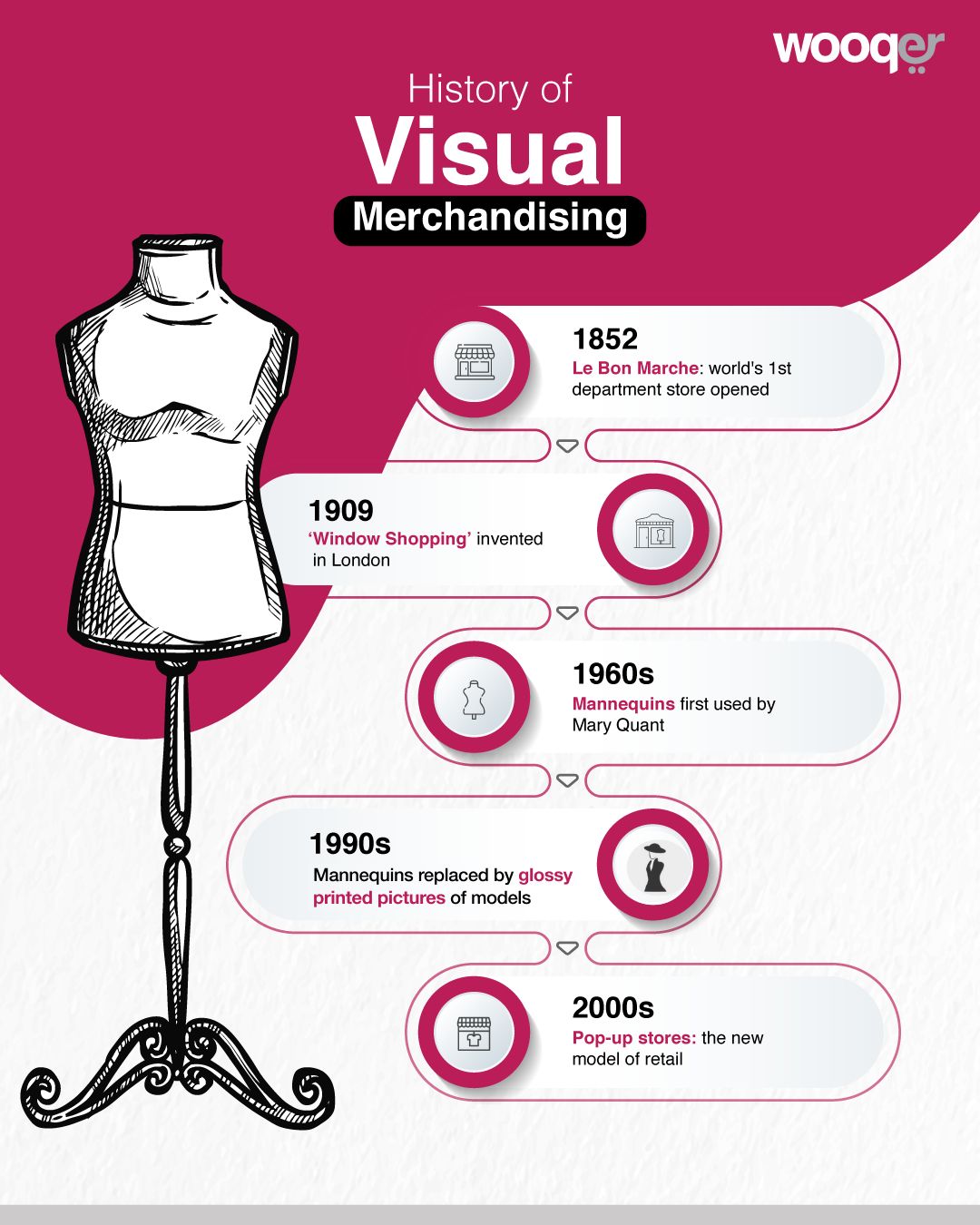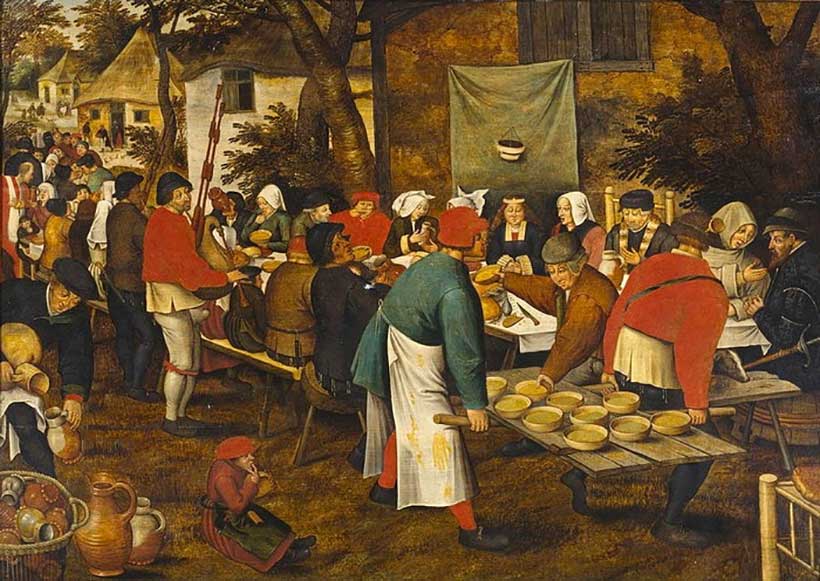In the retail industry, visual merchandising is a creative and artistic practice which helps in commercial gains. A brand or a seller’s story can be told in a more captivating way through Visual Merchandising rather than showcasing elaborate store decor. Like any other form of art and science, visual merchandising too is full of history.
VM has been there from the dawn of civilization, just that the ways have evolved with time. From a simple traders’ way of displaying products to attract consumers’ attention, visual merchandising transformed into a sale-inducing element of retail. Its purpose has always been to attract buyers with visually appealing ways, and then maintaining engaging customer experience by building long term relationships with either retailer’s big signages (in the old days) or with in-store displays and layouts (in today’s times) to encourage them to be repeat customers. With time, the art of visual merchandising improved and the techniques became more methodical and scientific.
Early Traders
Trading has been known to mankind since the beginning of time. Remember bartering?
Traders and merchants in the initial days of trading used to display products in a way that looked appealing to the eyes and attracted more and more customers. These products could be anything like fruits, grains, meat or anything else. The best of the lot was placed on the top so that it looks pleasing to the customer and the customer walks to the trader to buy that particular item.
Though in the retail shops in pre-1800s, there wasn’t much concept of Visual Merchandising and the stock was kept in the godown or in some storage room. When a customer would ask for a certain thing, then it was fetched from the storage room. Hence, the retail shops were more for functional use and the signage was limited to a big bold name of the shop.
Visual Merchandising in Early 19th Century
Concepts like factory outlets came into existence during the 1800s. They were open and unattractive spaces which were used by factory owners and manufacturers to sell their damaged and imperfect products. They used to sell products but there was no idea of implementing Visual Merchandising.
When the industrial revolution ended in 1840, there were huge technological innovations which impacted early retail. There was manufacturing of iron, glass, and light fittings which contributed to an elaborate visual shopping experience.
The Concept of the Departmental Store in Late 19th Century
The idea of visual merchandising was first introduced to proper retail in 1883 by Harry Gordon Selfridge, when used to work at Marshall Fields. He once decided to make products more in reach to customers by replacing counters with tables for display instead. He was also the pioneer for using windows for merchandise display. From then on, customers would pass through the appealing stores and observe the shops and turn into window shoppers.
In the late 80’s, Aristide Boucicaut came up with the world’s first department store: Le Bon Marche and thus came the concept of departmental stores which brought about the ideas of visual designs and displays in stores. Then, merchandise display was made one of the most important aspects of the shopping experience. In the 19th century, the department stores transformed the concept of visual merchandising in majorly three ways.
- The display ideas and techniques which were implemented in showcasing the products were made a part of everyday shopping.
- Early departmental stores were given a rich feel using luxurious shiny interiors that looked competitive to the most lavish shops.
- In order to pass on the message to customers that a massive stock is maintained in the store, departmental store owners displayed the stock in unorganized piles and in a haphazard way.

VM in the 20th century
In the 20th century, the small individual retailers followed the footsteps of big stores in order to become successful. There was a notion that if they display their products in a more visually appealing way, then they will attract more customers’ attention, that will lead to sales. That’s when Visual Merchandising actually was born.
Now, the merchandise could be shown to the prospective customers through the large shop windows and lighting could make the displays attractive. There were themes which would tell a story about the store and the brand to leave an impact on the customer.
Things like stands, shelves, racks and mannequins were starting to be put to use so that the stock of products were not kept randomly and shabbily on the floor of the store. The concepts of signage started getting implemented so that information about new stock, discounts and more could be conveyed to the customers.
Visual Merchandising in Today’s Times
In today’s times, VM isn’t only about visuals anymore. It’s targeted to simulate all the senses in order to entice the customers to shop. Visual Merchandising is a full-fledged industry on its own now which has a number of techniques that are used across various retail industries.
Retailers don’t let go of the opportunity to leave a positive impact on shoppers whether they are only window shopping or buying a product which they walked into the store for.
“Experiential Retail” is the new ethos. Touch basing consumers at various stages of a buying cycle is of utmost importance. Interactive signages and displays grab the attention of the consumer and makes them interested in picking up and experiencing the product. On an average, a person stays in store for 2.5 mins if he doesn’t make a purchase, 11 mins if he does and 60-70% of purchases are impulse.
Retail experts have adopted technologies like CAD for visualisation which are used for store planning and virtual technology. Signage tools like Photoshop and Illustrator are getting extensively used in creating unique signage and store graphics. Digital screens and interactive touch screens have tingled all the senses of consumers and given the retailers a new way to attract more footfall and thus conversions.
Laying importance on building relations with customers and engaging them has shaped the evolution of visual merchandising. Learning about the growth of VM techniques gives retailers ideas on how to keep innovating new VM techniques suitable for their businesses. History teaches us by learning from the past and the history of VM shows us how a concept of selling using visuals gets transformed so much over time.
The key takeaway is that in order to grow and evolve in the retail industry, it’s imperative to recognize the needs of your customers, to study their buying lifecycle and to find creative ways to engage with them. Visual Merchandising helps you do that, in many ways and more.

